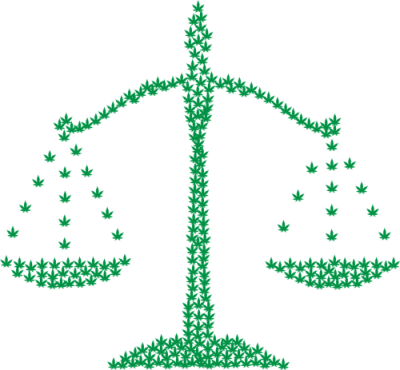Introducing our new “Cannabis and Driving” blog series.
Impaired driving in Canada refers to the operation of a motor vehicle while the driver’s ability is impaired by alcohol or drugs. In this series, I look at existing and proposed laws concerning impaired driving by cannabis and compare these laws with those for alcohol. In doing so, I contrast the research that supports or refutes these laws. A critical element for assessing the value of these laws is the criteria used to define impairment. In this series, we see that the nature of the scientific evidence used for assessing alcohol impaired driving differs substantially from cannabis impaired driving.
What are current federal laws for cannabis and alcohol while driving?
Today in Canada, convictions for impaired driving by cannabis are based on behavioural grounds of drug impairment, using the Drug Recognition Expert (DRE) approach. This approach typically involves obtaining behavioural evidence of drug impairment, such as poor balance or difficulty concentrating, followed by drug tests, often urinalysis, to confirm drugs have indeed been used. As epidemiologist Leon Gordis writes in Chapter 5 of Epidemiology, the advantage of this two-step approach is that those identified as impaired are more likely to be impaired than with a simpler one-step approach. The drawback is that the process is cumbersome and dependent on police correctly identifying drivers that appear under the influence, a difficult task; hence, it results in a low conviction rate. In 2016, drug-related driving charges, including those for cannabis, accounted for about 3.9% of all charges, with the remainder (97.1%) being alcohol.
For alcohol, it is a criminal offence to drive with a blood alcohol concentration (BAC) of 0.08% alcohol (this legislation, frequently referred to as per se law for the Latin term meaning “by itself” came into effect in 1969). It is also a criminal offence to refuse a sobriety test assessment or a breath test. The original per se law was based on a breathalyzer reading at a police station. Prototypes of breath tests for alcohol were designed in the 1800s, but only through refinements in designs has the roadside breath test that we have today been approved as an accurate estimation of a person’s actual BAC (as proven by comparisons with blood tests). However, under current laws, police are still required to have reasonable grounds to order a driver to provide a breath sample.
What are provincial laws for alcohol or cannabis while driving?
In addition to the criminal laws proposed by the federal government, many have additional laws against drinking and driving. Most provinces have penalties for drivers at BAC levels of 0.05% alcohol – the equivalent of about 2 standard drinks for a 160-pound man. Ignition interlock systems that prevent drinking drivers from starting a vehicle until passing a breathalyzer test, administrative license suspensions, and vehicle impoundment are other types of laws and consequences for drinking drivers. For cannabis, Alberta has passed zero tolerance laws against any amount of cannabis detected in new drivers. BC is considering similar legislation plus a 90-day Administrative suspension when police reasonably believe drivers are affected by cannabis.
What is the proposed federal legislation for cannabis and alcohol while driving?
The Government of Canada prepared a backgrounder report in 2017 that describes proposed legislative changes for laws in relation to cannabis and driving. The legislation would permit roadside oral fluid tests when law enforcement officers reasonably suspect that a driver has taken cannabis or other drugs. For positive readings, officers could demand a drug evaluation or a blood sample. A blood test reading of 2 to 5 ng/ml THC in whole blood would be subject to a summary (i.e., less serious) criminal conviction and a penalty fine of up to $1,000. A reading over 5 ng/ml could be subject to an indictable (i.e., more serious) offence and a mandatory fine of $1,000 for a first offence and higher penalties for repeat offenders. Those with both a BAC over .05% alcohol and 2.5 ng/ml THC could also be charged with an indictable offence.
New laws targeting drinking drivers are also on the table. Proposed changes would let law enforcement officers randomly administer an alcohol breathalyzer test to a driver without any suspicion the driver has been drinking. The laws propose escalating mandatory minimum fines based on different BAC thresholds and repeat offenders would be subject to mandatory prison sentences, similar to the current ones.
What is the scientific basis for the proposed laws?
The Government of Canada did not provide references of scientific studies in its 2017 backgrounder to support these recommendations. In this blog series, I will review scientific studies to see what the evidence says about cannabis impairment in an attempt to understand why the Canadian government is proposing these changes to impaired-driving laws, and whether the proposed legislation makes sense within Canadian criminal laws. In doing so, comparisons will be drawn with alcohol.
Part 2: The safety benefits of alcohol breath-testing: a research summary
Part 3: The safety benefits of THC blood testing: a research summary
Part 4: The myth and origins of 24-hour performance deficits from cannabis
 Scott Macdonald is the Assistant Director of research at the Canadian Institute for Substance Use Research and a professor in the School of Health Information Science at the University of Victoria. He has been an expert witness in several cases related to drug testing in the workplace. Material from this series is taken from his book, Cannabis Crashes: Myths and Truths, Lulu Press.
Scott Macdonald is the Assistant Director of research at the Canadian Institute for Substance Use Research and a professor in the School of Health Information Science at the University of Victoria. He has been an expert witness in several cases related to drug testing in the workplace. Material from this series is taken from his book, Cannabis Crashes: Myths and Truths, Lulu Press.
**Please note that the material presented here does not necessarily imply endorsement or agreement by individuals at the Canadian Institute for Substance Use Research.



